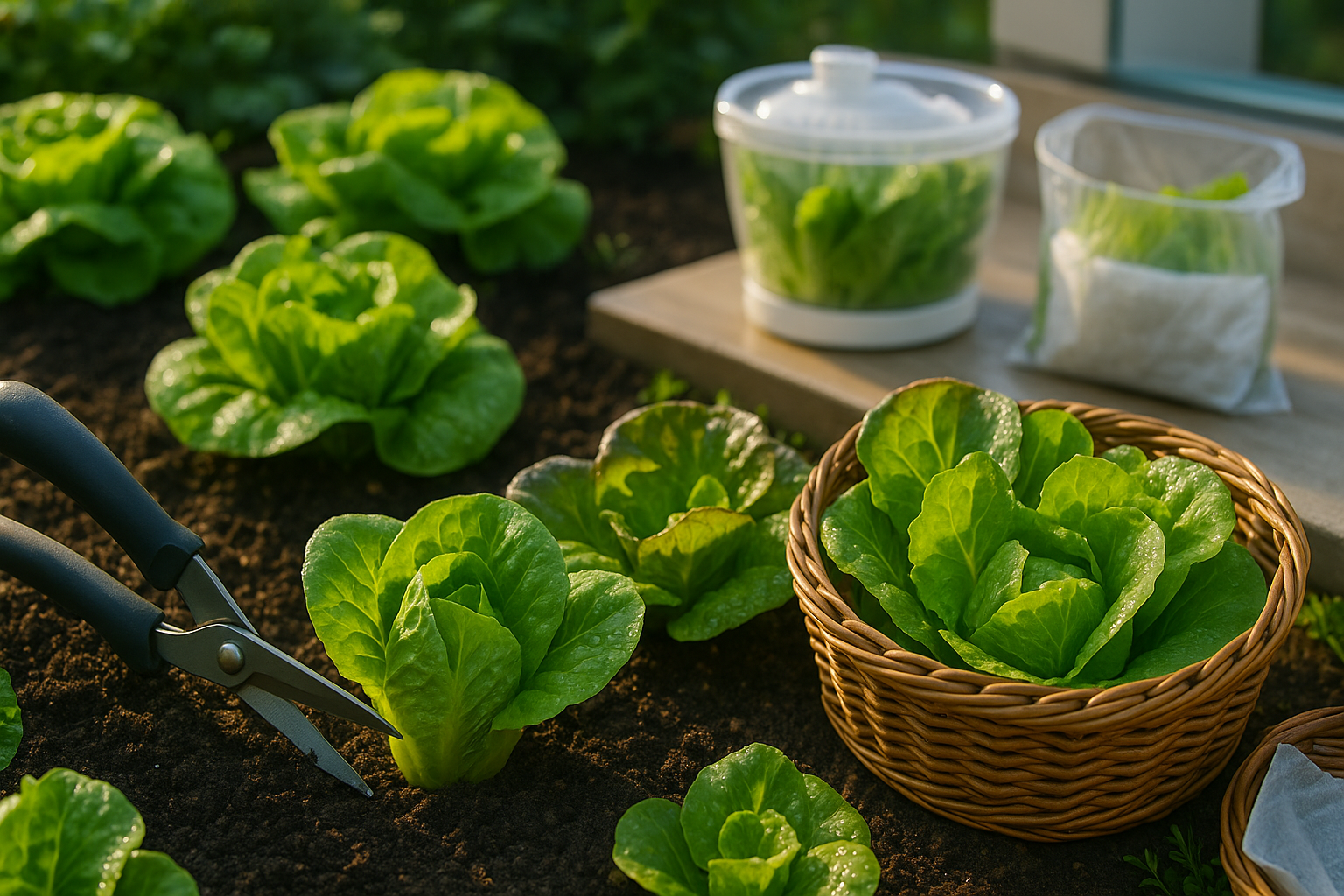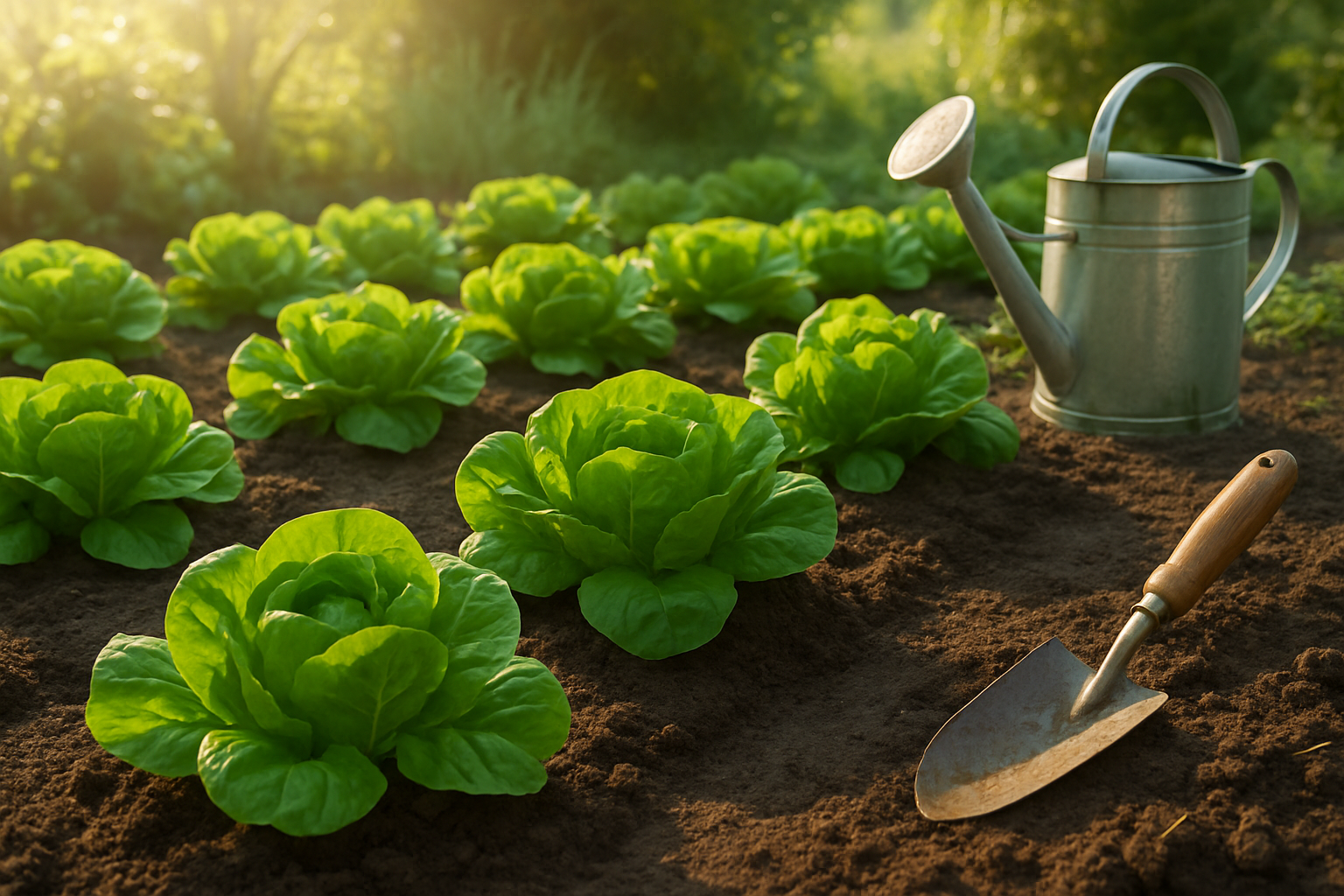Introduction
If you’re interested in growing butterhead lettuce, you’re in for a treat. Known for its tender, buttery leaves and mild, sweet flavor, butterhead lettuce is a favorite among home gardeners and salad enthusiasts alike. Its delicate texture and vibrant green heads make it a delicious and attractive addition to any vegetable patch.
However, achieving the perfect harvest isn’t just about planting seeds; the secret lies in understanding each stage of the growing process—from selecting the right soil and watering routines to proper spacing and pest management. In this guide, you’ll discover simple, practical steps for nurturing butterhead lettuce from seedling to table. You’ll also learn tips for preventing common problems and find advice that fits even the busiest gardening schedules.
By the end, you’ll be equipped to enjoy crisp, homegrown butterhead lettuce all season long, whether you’re a beginner or a seasoned grower.
Choosing and Preparing the Right Location

Butterhead lettuce thrives with plenty of sunlight—ideally, your chosen spot should get at least 6 hours of morning light daily and some afternoon shade, especially in hot climates. This balance helps prevent the tender leaves from wilting or turning bitter.
As for soil, butterhead prefers a loose, well-draining mix rich in organic matter. Heavy clay or sandy soils aren’t ideal on their own, but you can easily improve them by mixing in compost or aged manure, which provides nutrients and boosts both structure and drainage.
Aim for neutral to slightly acidic soil, with a pH between 6.0 and 7.0. Test kits are inexpensive and help you make targeted adjustments—for example, adding lime can raise pH, while peat moss can lower it.
Whether you’re prepping a garden bed or filling a container, loosen the soil to at least 8 inches deep, breaking up clumps and removing debris to promote healthy root growth and moisture movement.
Deciding between container and ground growing depends on your space and flexibility needs:
- Containers (minimum 6 inches deep and wide) allow you to place lettuce where the sun is best and move plants out of harsh afternoon rays, making them ideal for balconies or patios.
- Ground beds are perfect for larger harvests and let you maximize space in a backyard plot or raised bed.
Just remember not to overcrowd—give each butterhead plant about 6–8 inches apart in containers, or 10–12 inches apart in the ground, to ensure good airflow and leaf development.
Taking these steps when choosing and preparing your location sets your lettuce up for lush, crisp growth all season.
Planting Butterhead Lettuce
Starting butterhead lettuce from seed is easy, whether you’re sowing indoors or directly in the garden. For indoor sowing, begin about 4-6 weeks before your last expected spring frost. Fill seed trays or small pots with a quality seed-starting mix. Sow seeds about 1/8 inch deep, just lightly covering them with soil. Lettuce seeds need light to germinate, so avoid planting too deep.
Keep the soil moist but not soggy, and place the trays in a bright spot or under grow lights. Seeds should sprout within 7-10 days. Once seedlings have two sets of true leaves and outdoor temperatures are consistently above 40°F (4°C), start hardening them off by gradually exposing them to outdoor conditions for about a week.
When transplanting, space plants 8-10 inches apart in rows 12-18 inches apart to ensure good air circulation and room for heads to form.
Direct Outdoor Sowing
For direct outdoor sowing, wait until soil temperatures reach at least 40°F (4°C), usually about two weeks before your average last frost date. Prepare the garden bed by loosening the soil and enriching it with compost. Sow seeds 1/8 inch deep, spaced 1 inch apart in rows 12-18 inches apart. Once seedlings are about 2 inches tall, thin them to 8-10 inches apart to prevent crowding.
Water regularly to keep the soil evenly moist but avoid waterlogging, as butterhead lettuce prefers cool, consistent moisture. Mulch can help retain soil moisture and keep roots cool.
Continuous Harvest Tips
- Plant a new batch every two weeks for a steady harvest.
- Time your indoor starts and outdoor sowings carefully.
- Follow the proper spacing and depth guidelines for best results.
By following these steps, you’ll enjoy tender, buttery heads of lettuce all season long.
Caring for Butterhead Lettuce
Butterhead lettuce thrives when its soil is consistently moist but not waterlogged, as soggy roots can lead to rot and disease. Aim to water deeply once or twice a week, depending on weather conditions—hot, dry spells may require more frequent watering.
Mulching with straw or shredded leaves helps retain moisture and keeps the soil temperature cool, which is essential for preventing the plant from bolting (going to seed) and developing a bitter taste. Maintain about two inches of mulch around your lettuce, but be careful not to crowd the plant’s base.
To promote lush, healthy growth, feed butterhead lettuce every 2-3 weeks with a balanced liquid fertilizer, like a 10-10-10 NPK mixture, or enrich the soil with compost before planting. Nitrogen-rich fertilizer encourages leafy development, but avoid over-fertilizing, as this can accelerate bolting.
To further prevent bolting, provide afternoon shade during hot weather and harvest promptly when heads form. Early in the growth cycle, thin seedlings so that mature heads are spaced 6-8 inches apart; this thinning reduces competition for water and nutrients, allowing heads to develop fully.
Prune away any crowded or damaged leaves to boost air circulation, which reduces the risk of mildew.
If growing butterhead lettuce in containers, choose pots at least 6-8 inches deep and wide—a window box or shallow tub is perfect for a few heads. Containers dry out more rapidly than garden beds, so check moisture daily and water whenever the top inch of soil feels dry. Use a lightweight, well-draining potting mix, and fertilize lightly, as nutrients wash out faster from containers.
Regular care—consistent watering, light feeding, shade, mulching, and thinning—will keep your butterhead lettuce sweet, tender, and ready for salads.
Protecting Against Pests and Diseases

Keeping your garden healthy starts with early identification and prevention of common pests and diseases. Aphids, slugs, and snails are frequent visitors that can quickly damage tender leaves and new growth. To spot them early, check the undersides of leaves for clusters of tiny green, black, or white aphids, and look for irregular holes or slime trails left by slugs and snails.
Handpicking these pests in the early morning, installing copper tape or crushed eggshell barriers, and encouraging natural predators like ladybugs are excellent ways to minimize damage without chemicals.
On the disease front, watch out for downy mildew, which appears as yellow or white fuzzy patches on leaf surfaces, and root rot, often noticed when plants become wilted or blackened at the base despite proper watering. Both thrive in damp, poorly drained conditions, so space plants apart for airflow and avoid overhead watering.
If you catch mildew early, prune infected areas and spray with a homemade solution of baking soda and water (one teaspoon per quart), while root rot may require removing affected plants and improving soil drainage.
For ongoing prevention, rotate crops yearly and choose disease-resistant varieties when possible. Opt for neem oil or insecticidal soap as natural, organic remedies that target a wide range of pests and diseases without harming pollinators.
Staying alert and using these simple organic approaches can help keep your garden thriving and resilient, even through the challenges posed by pests and diseases.
Harvesting and Storing Butterhead Lettuce

Harvesting butterhead lettuce at the right moment is key to crisp, sweet salads. For the best flavor and ideal head size, pick your lettuce when the heads feel firm and measure about 6–8 inches across. This usually happens just as they start to mature but before they bolt and turn bitter.
Early mornings are the best time to harvest since lettuce holds up better in cooler temperatures. You have two main options for harvesting: cutting or pulling.
- Use a clean, sharp knife or garden shears to cut the entire head just above the soil. This is the most common method and keeps the roots intact, sometimes allowing side shoots to regrow, especially if you leave a few outer leaves.
- If you pull the whole plant, wash off excess dirt and trim the roots before storing.
For a continuous supply, try staggered harvesting: pick only the outer leaves from several plants at a time, letting the inner ones keep growing. This “cut-and-come-again” method can extend your harvest over several weeks.
Once harvested, rinse the leaves in cold water to remove any soil or bugs, and dry them thoroughly with a salad spinner or by gently patting with a towel—wet leaves spoil faster.
Store your lettuce in a loosely closed plastic bag or a container lined with a paper towel in the refrigerator’s crisper drawer. This keeps the humidity just right and helps maintain freshness for up to ten days. Always check for wilted leaves and remove them to prevent spoilage of the rest.
Top Varieties to Try & Extra Growing Tips

If you’re ready to grow butterhead lettuce, popular and beginner-friendly varieties like ‘Buttercrunch,’ ‘Bibb,’ and ‘Tom Thumb’ are excellent choices.
‘Buttercrunch’ is known for its crisp, tender leaves and strong bolt resistance, making it perfect for warmer climates. ‘Bibb’ offers a classic, mild flavor, while ‘Tom Thumb’ is a compact option ideal for small gardens or container growing.
To maximize your harvest, try successive planting: sow a few seeds every two weeks to ensure a steady supply of fresh lettuce. If you’re gardening in hot weather, provide some afternoon shade or use a lightweight fabric row cover to prevent bolting and bitter leaves.
For those with limited space, window boxes or vertical gardens work surprisingly well—just make sure the containers have good drainage and rich, moist soil. Mulching and regular, gentle watering help keep roots cool and hydrated.
Don’t be afraid to experiment; every garden is a bit different, and you might discover a new favorite variety or technique along the way.
Have you tried growing butterhead lettuce before? Share your successes and tips in the comments to help others get the most out of their lettuce patch!
